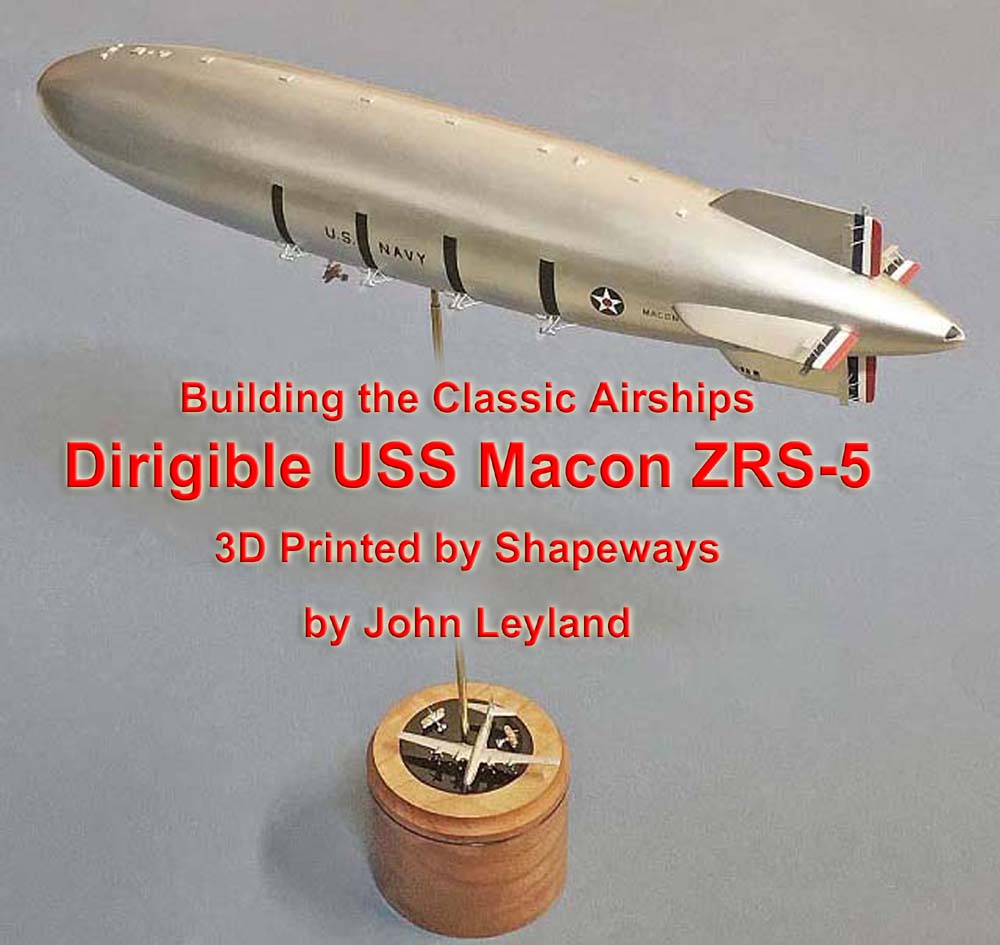| In retrospect, it is hard for me to imagine how anyone
could have considered the dirigible as being practical (to say nothing
of survivable) in a naval combat environment. In the 1920’s, however, the
task of finding an enemy fleet in the vast reaches of the ocean was so
difficult that an attempt to improve on the German efforts with lighter-than-air
dirigibles seemed worth the effort . With the very limited range and endurance
of aircraft at the time and with no hope that congress would fund an adequate
number of scout cruisers, Adm. Wm Moffett, chief of the USN Bureau of Aeronautics,
became convinced that larger and more powerful airships capable of carrying
“parasite” aircraft to extend the scouting radius and to allow the dirigible
itself to remain out of contact with the enemy might be the solution to
the scouting problem.
The huge ships proved to be extremely vulnerable to adverse weather
conditions (all but one of the USN rigid airships were destroyed by weather)
and proved less successful than hoped as scouts in fleet exercises. After
Adm. Moffett was killed in the crash of Akron and Macon was lost after
less than two years of service, the program was terminated. As beautiful
and imposing as they were, dirigibles proved a developmental dead end,
at least with the materials and design skill available in the 1920’s.
|
| For years I have hoped for a 1/700 dirigible kit to join my series
of aircraft carriers in representing the history of USN naval aviation.
Finally Derek Harrington of Classic Airships offered models of the Akron
and Macon 3D printed by Shapeways. The models have significant detail differences
reflecting the different ships and I found them to be very accurate. |
 |
| The material used is called “Soft and Flexible” and lives up to its
name, being very porous and indeed flexible. The hull comes in three pieces
with the center section containing a very rudimentary representation of
the aircraft hangar. The gondola and engine mount set and the aircraft
set come as separate purchases.The limitations of 3D printing (at least
as used here) made these parts a questionable value. The gondola is very
well done. The engine mounts are far overscale, but by trimming off all
of the supports I found that the basic shafts are designed to easily and
perfectly align with the hull, solving the problem of aligning the eight
drive shafts with the hull and making them worth the money to me. The aircraft
fuselages are little gems, but all of the flying surfaces are too thick
and have to be replaced with plastic sheet (my experience with other aircraft
from Shapeways mastered by “Snafu” suggest that this is a matter of design
rather than a limitation of 3D printing itself). Again, the fuselages were
so much better than I could scratchbuild that they were worth the money
to me. The hull has all appropriate openings and makes an attempt at details
such as the dorsal gas vents and the large panels for an exhaust condensation
system on the sides, but the soft and flexible material is just too coarse
to represent fine detail. I cut off the gas vents and replaced them but
chose to live with the condensers. I’m glad I did the project, but I would
advise only experienced builders who REALLY want a dirigible to attempt
it. |
 |
|
|
| I started the project by removing the hangar portion and spent a lot
of effort scratchbuilding a replacement (see photos). I then glued the
hull sections together with 5 minute epoxy and began giving the whole hull
several (probably six) heavy coats of Mr Surfacer 1000 by brush, sanding
between to keep from filling the “valleys” in the fabric. When I felt the
surface was smooth enough to accept a bare metal finish (think of trying
to apply a bare metal finish to a sock!), |
 |
|
I used AK interactive Matt Aluminum on the hull and White Aluminum
for the lighter stripe along the line of the engines. The multiple engine
braces and the rudder and elevator balance structures were made from sprue.
I am satisfied with the model, but it wouldn’t stand up to IPMS level scrutiny. |
| Length 785 ft. (battleship Arizona was 608 ft.) Note size comparison
to 1/700 B-29 on the base. Beam 133ft. 7,401 260 cu. ft helium
8x 560hp Maybach 12 cyl . 55kt cruise speed 75 kt maxspeed
crew 60 5x Curtis F9C Sparrowhawk fighters Comm. 23 June, 1933
Lost 12 Feb, 1935 |
 |
|
|
|
|


